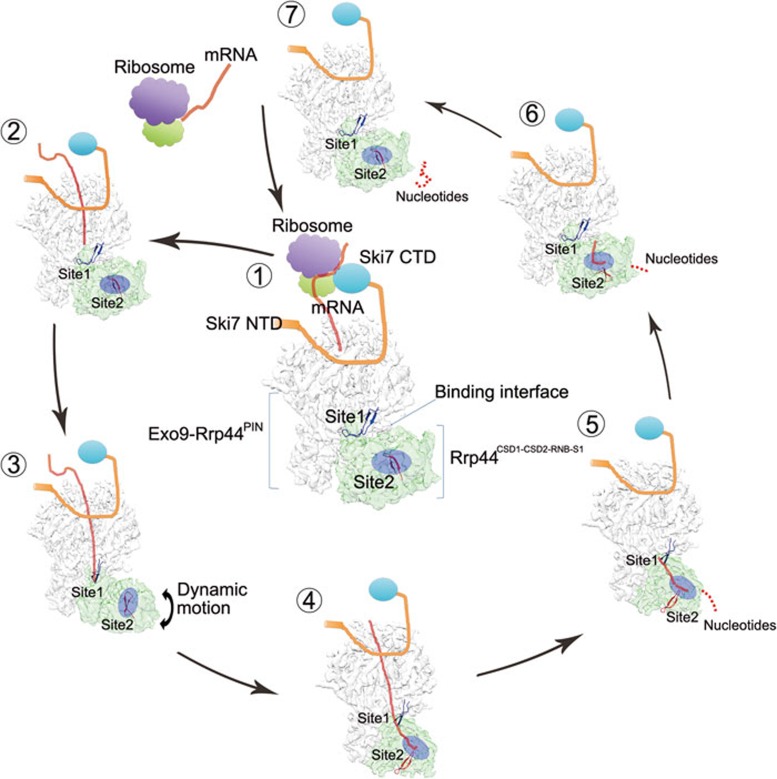Figure 7.
Model of RNA degradation by Exo10-Ski7 in the cytoplasm. During the mRNA decay process, the Ski7 protein recruits the exosome to the ribosome for effective targeting on aberrant RNAs (1). The RNA is loaded by Exo10-Ski7 from the top entry of the core (2), within which the RNA can be channeled through Site 1 and Site 2 along the central channel (3, 4, 5, and 6). When the 3′ end tail of the RNA reaches Site 1, it triggers a conformational change in Rrp43's hairpin loop that may weaken the interaction between the Rrp45 and the Rrp44 CSD2 domain (3). A conformational change in Rrp44 from the RNA-free to the RNA-bound state is stabilized when the RNA tail reaches Site2 (4). As the RNA substrate is shortened by the continuous degradation (5), the 5′ end of the RNA passes Site 1 and cannot hold Rrp44 in the RNA-bound state (6), thus resulting in the conformational recovery of the exosome for the next round of reaction (7). In the cartoon model, the exosome is divided into two parts, Exo9-Rrp44PIN (grey) and the RNase II-like domain (green). The N-terminal and C-terminal domains of Ski7 are marked with Ski7 NTD and Ski7 CTD, respectively. The loop of Rrp43 (aa 245-280) in Site 1 (the binding interface) is colored blue, and the loop of Rrp44 (aa 695-720) in Site 2 is colored red. The RNA degradation pocket (Site 2) is boxed by a blue semi-transparent circle.

